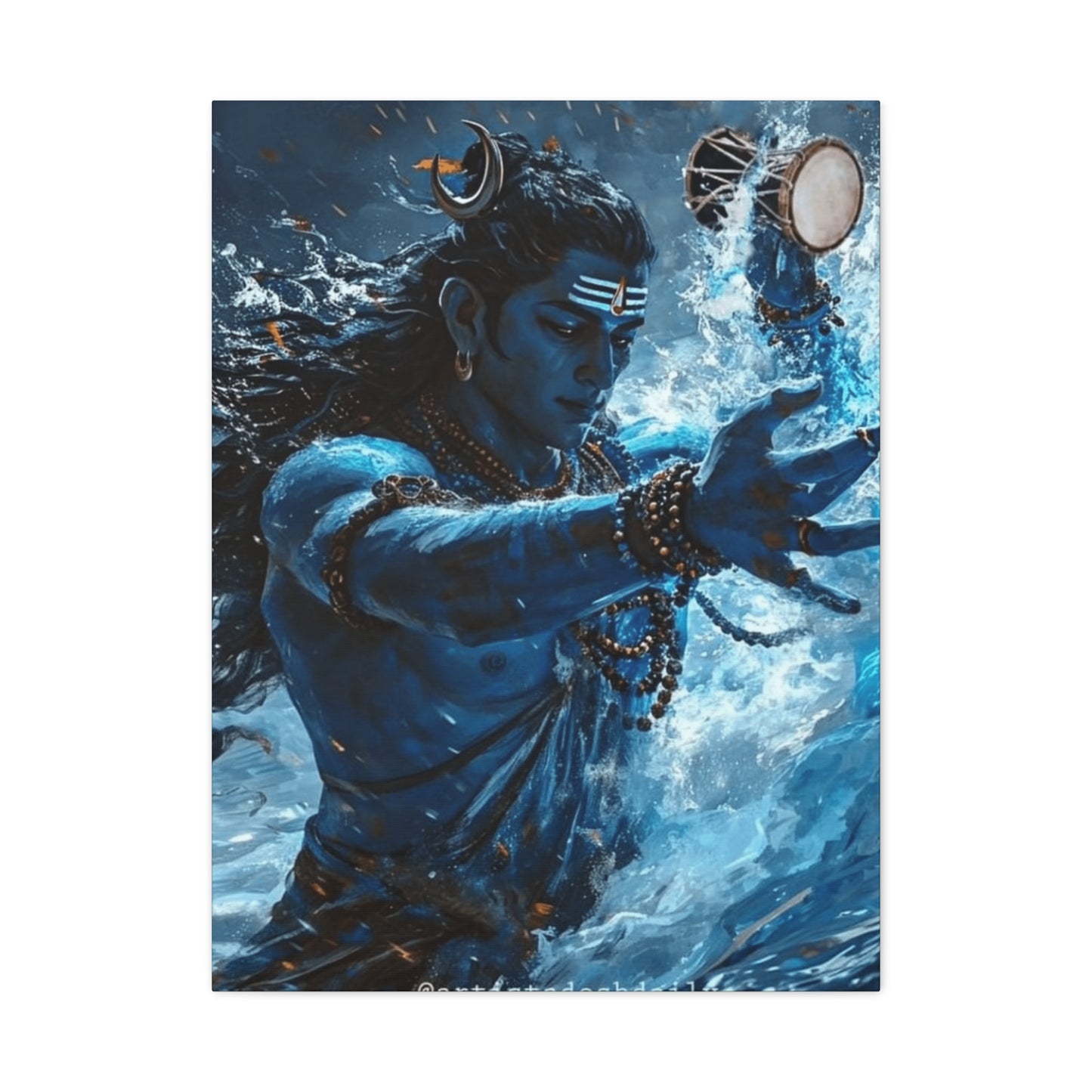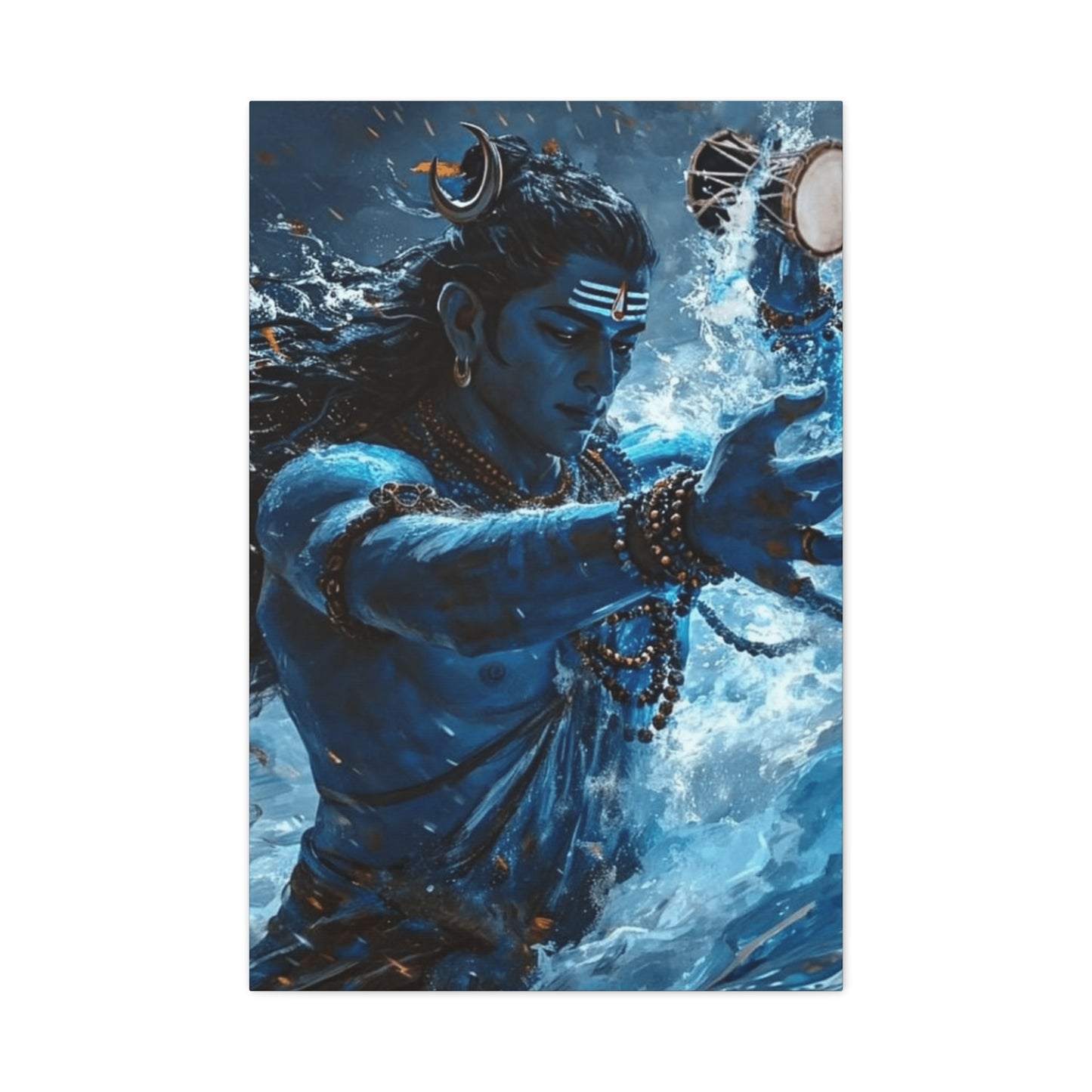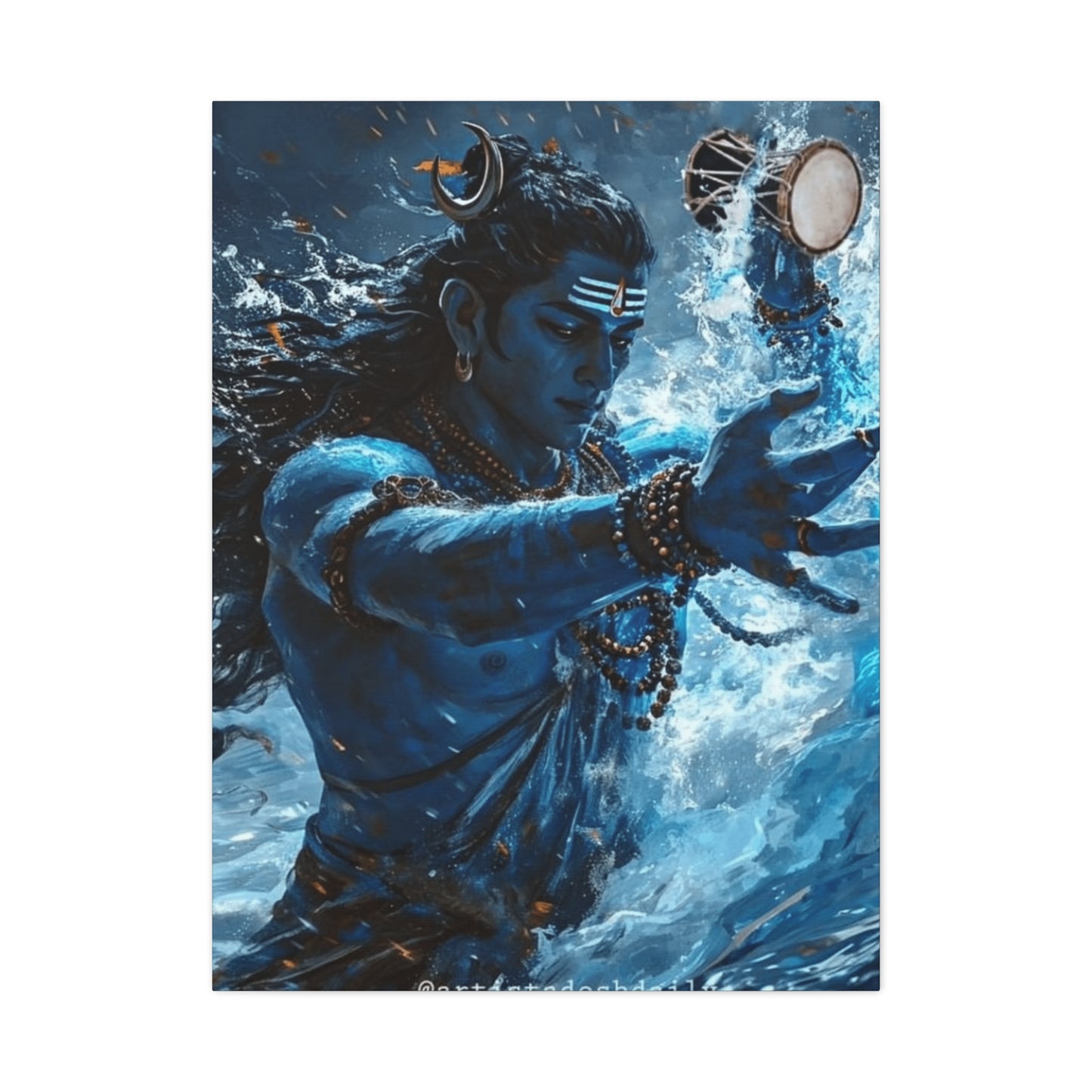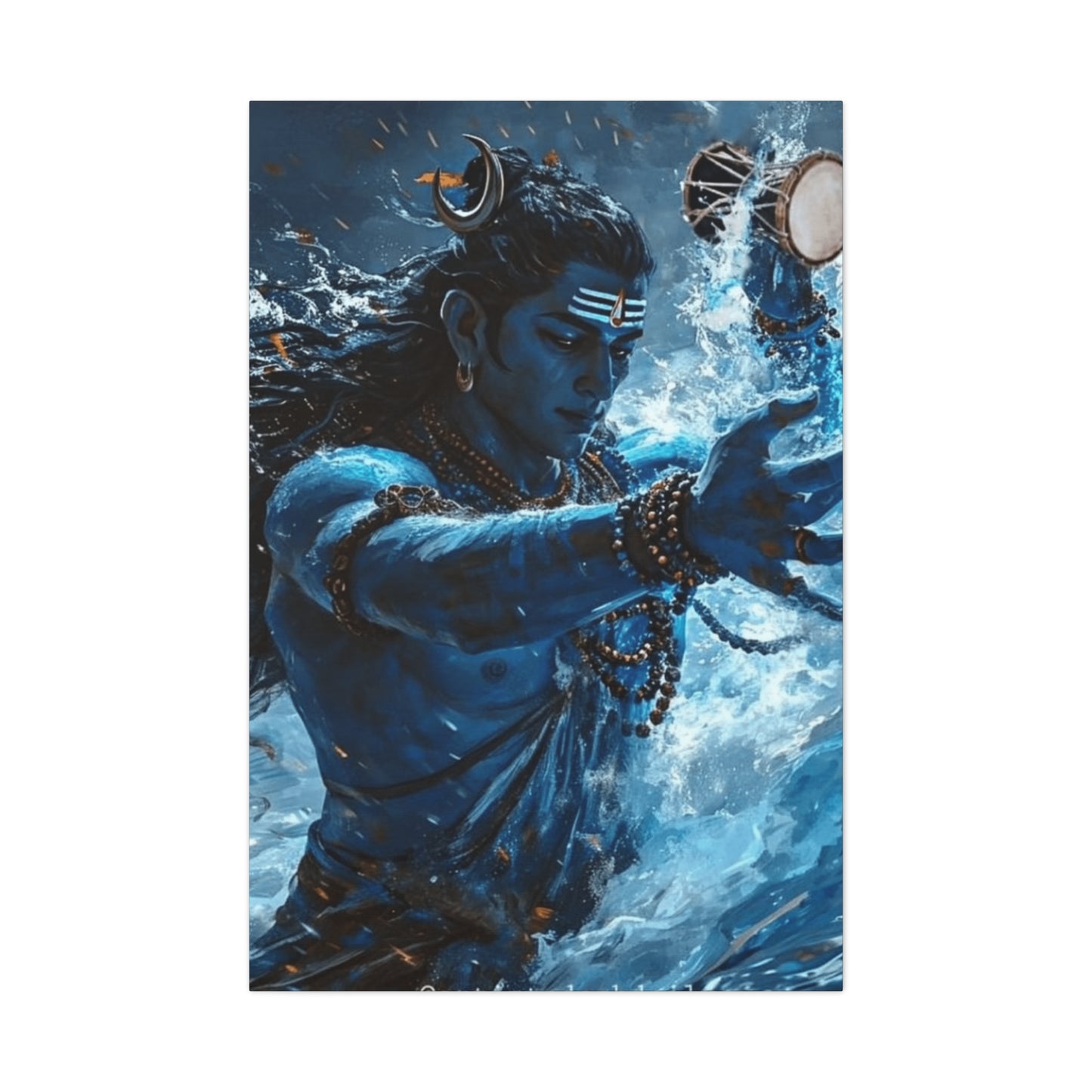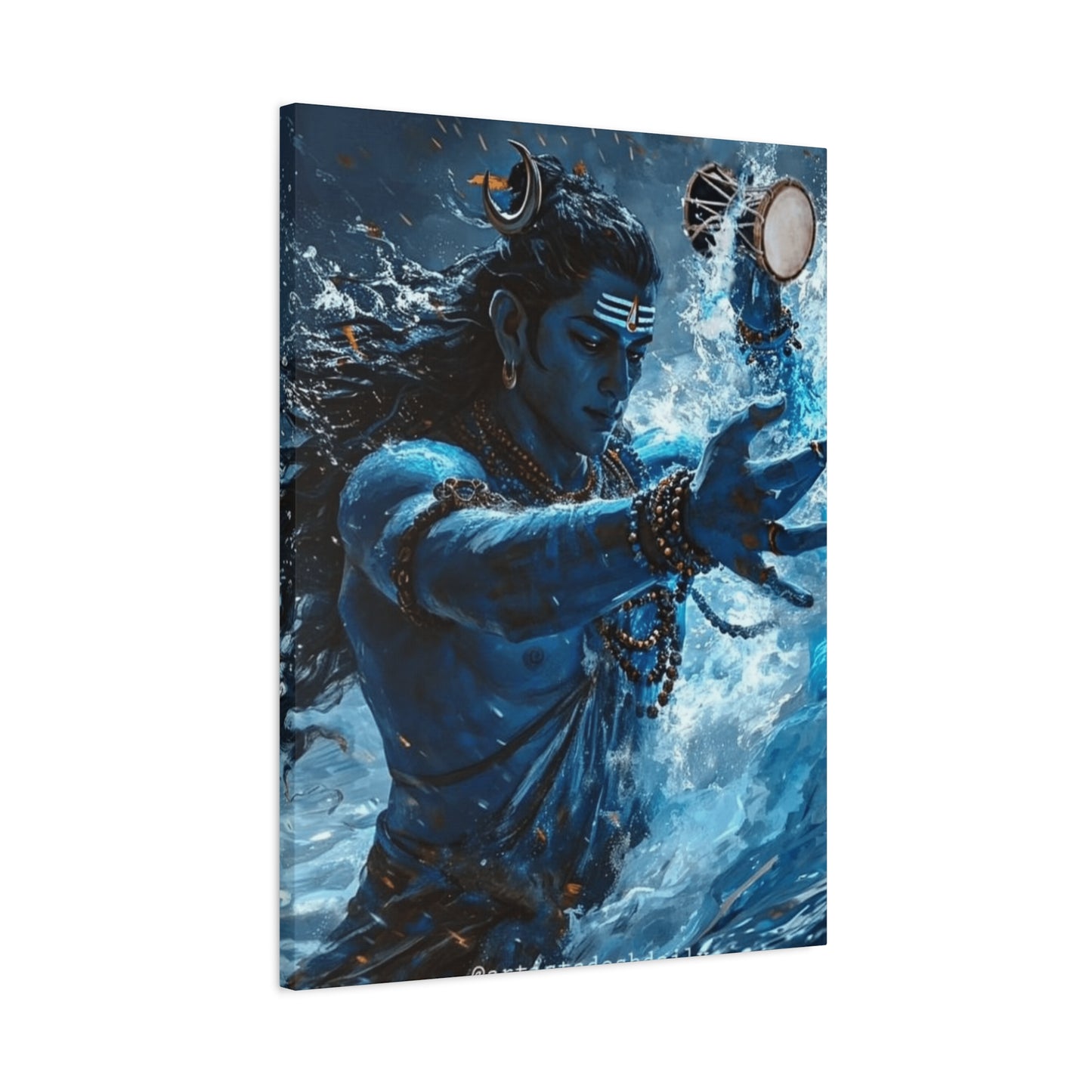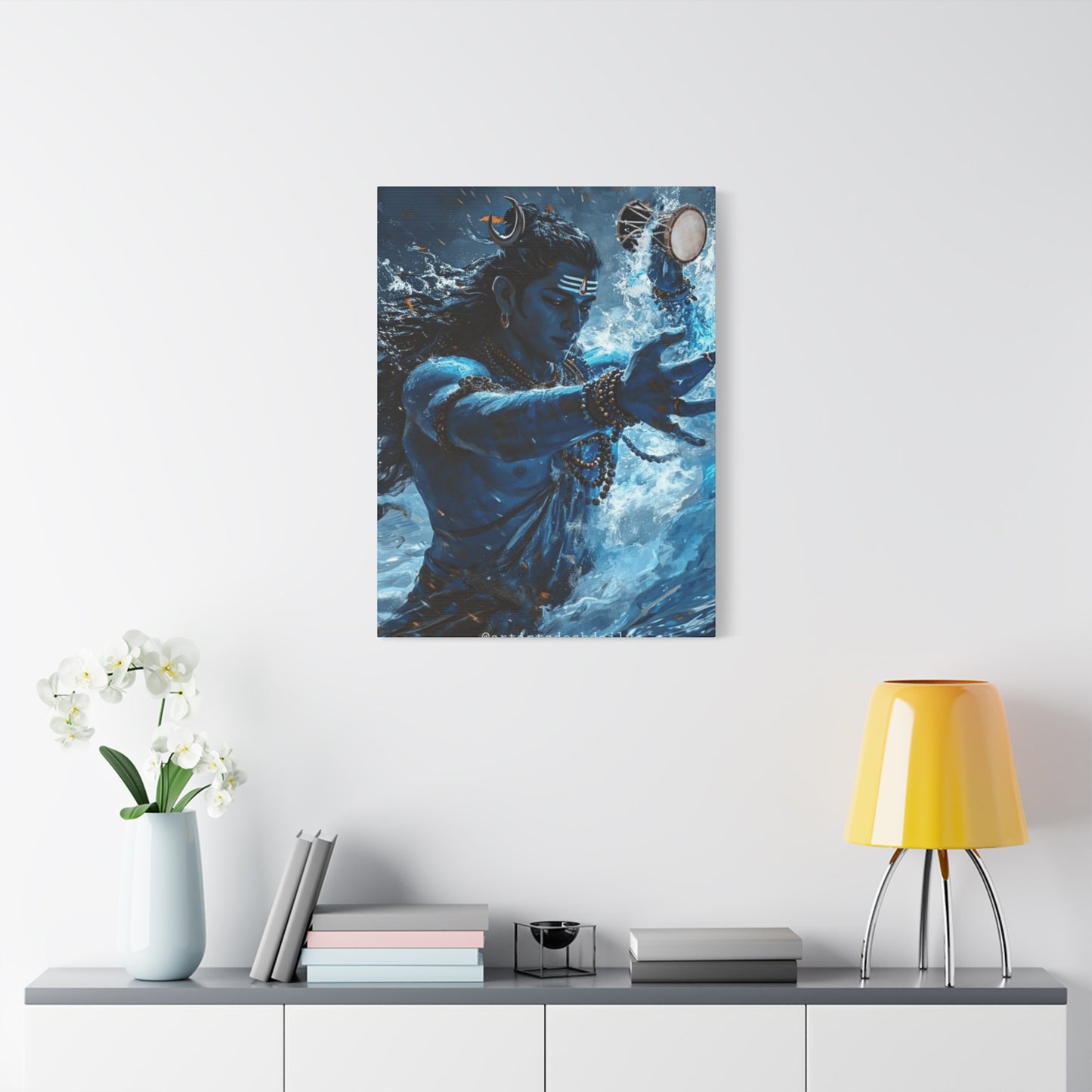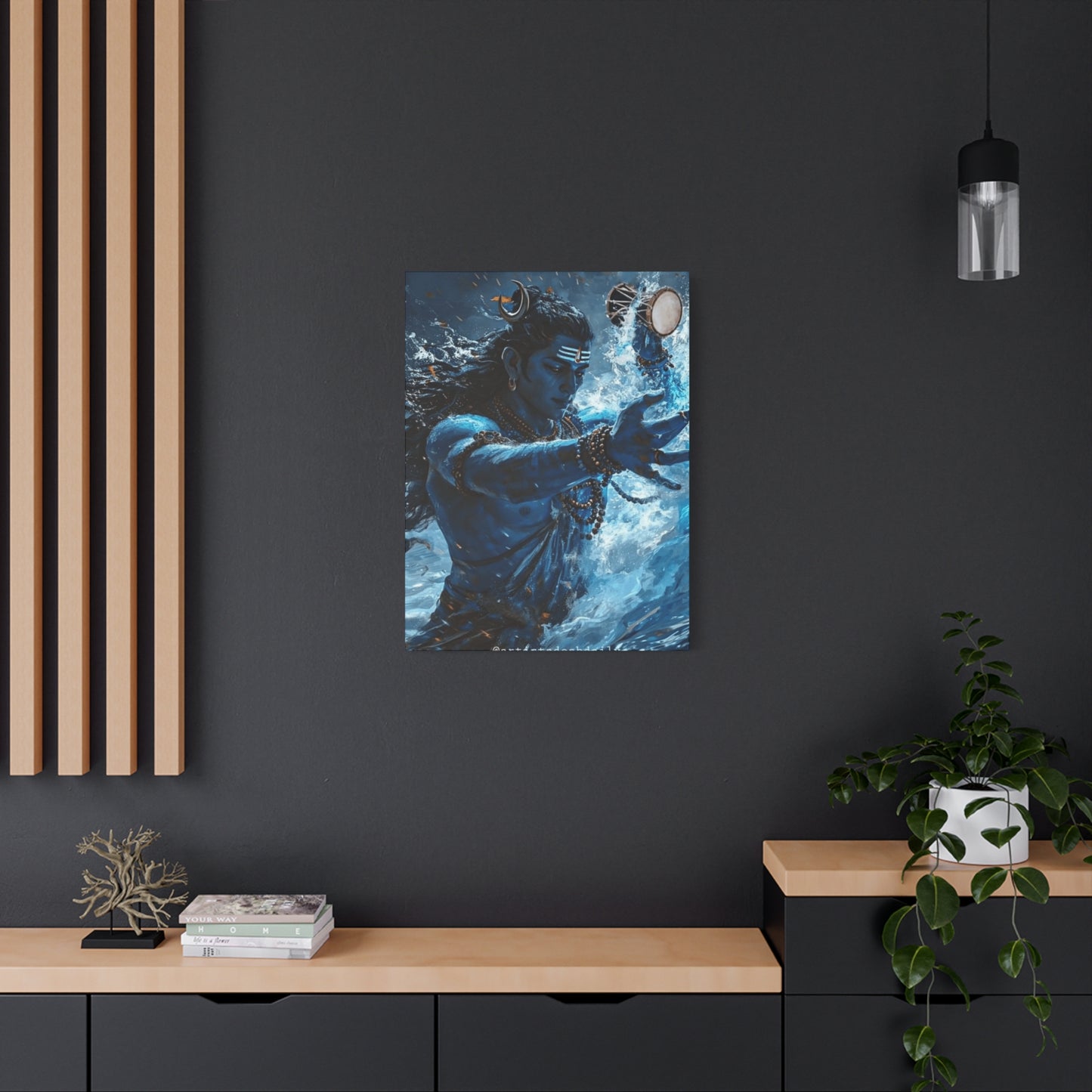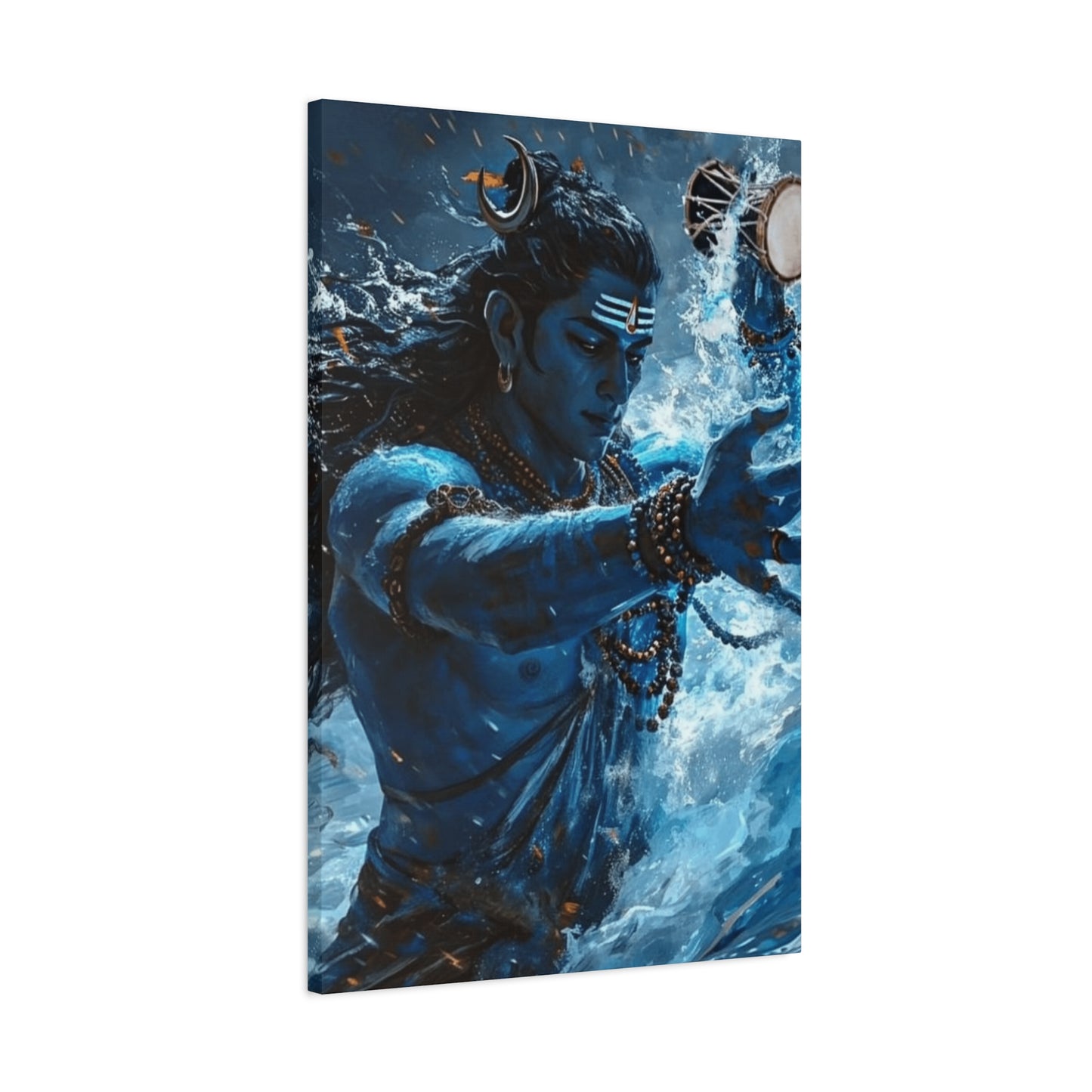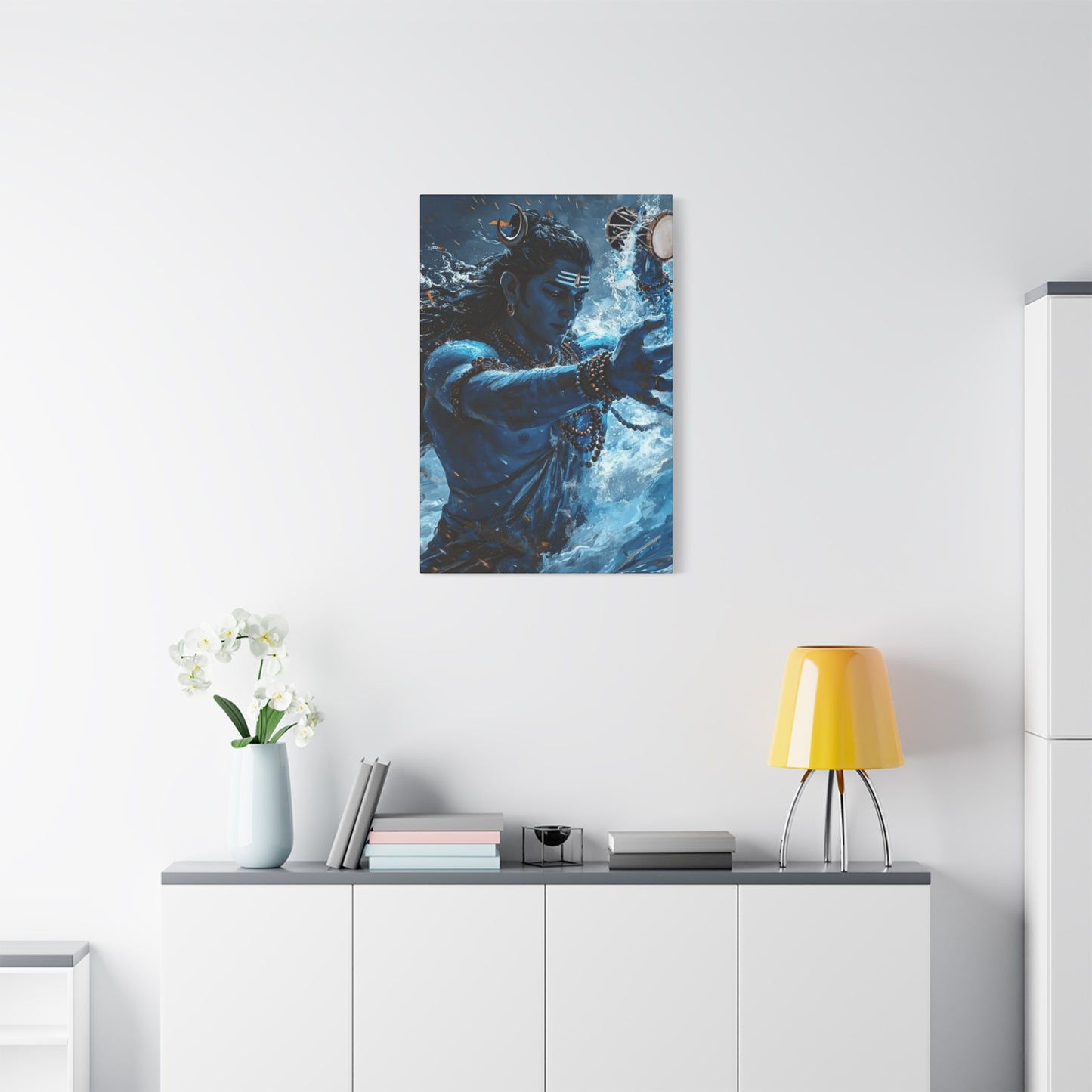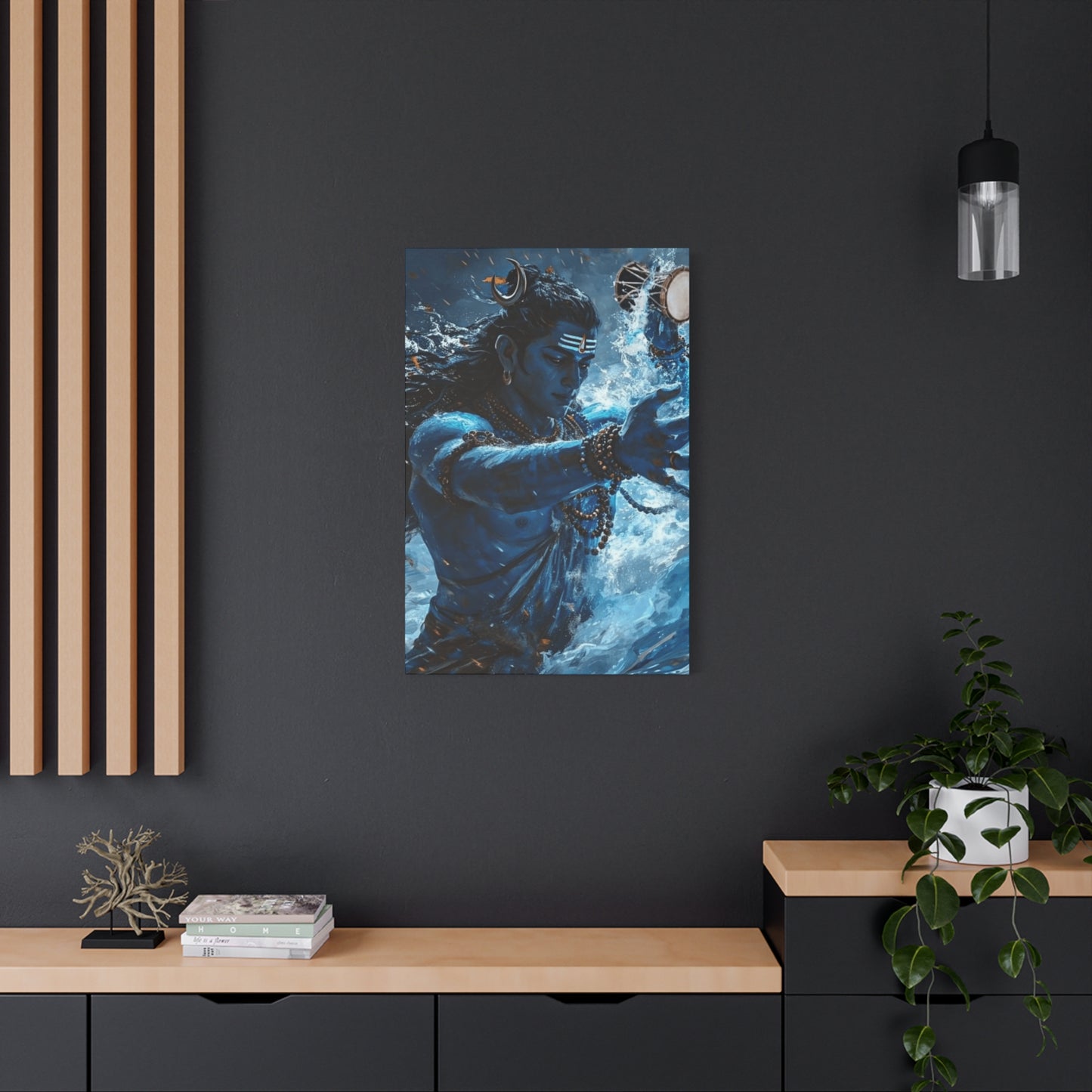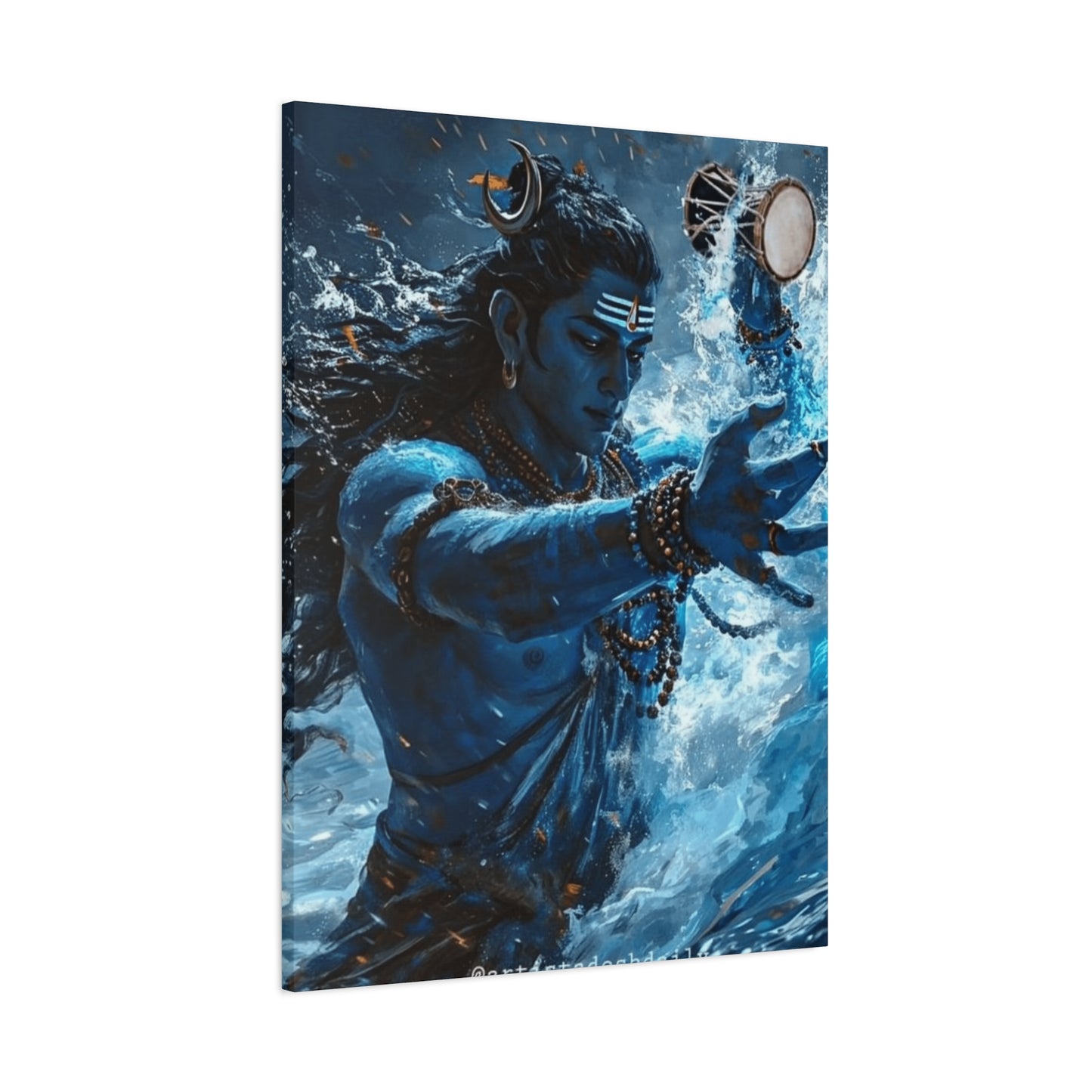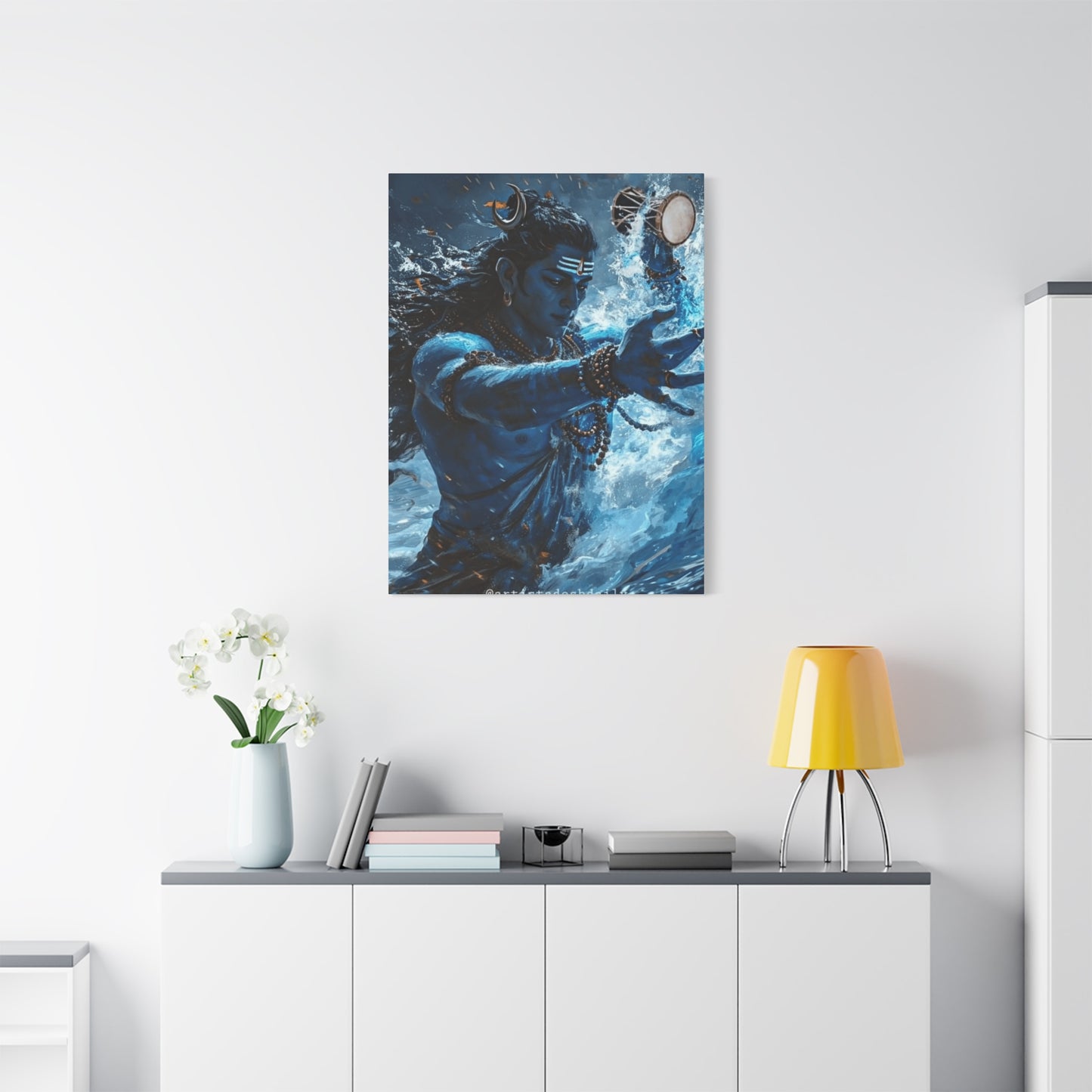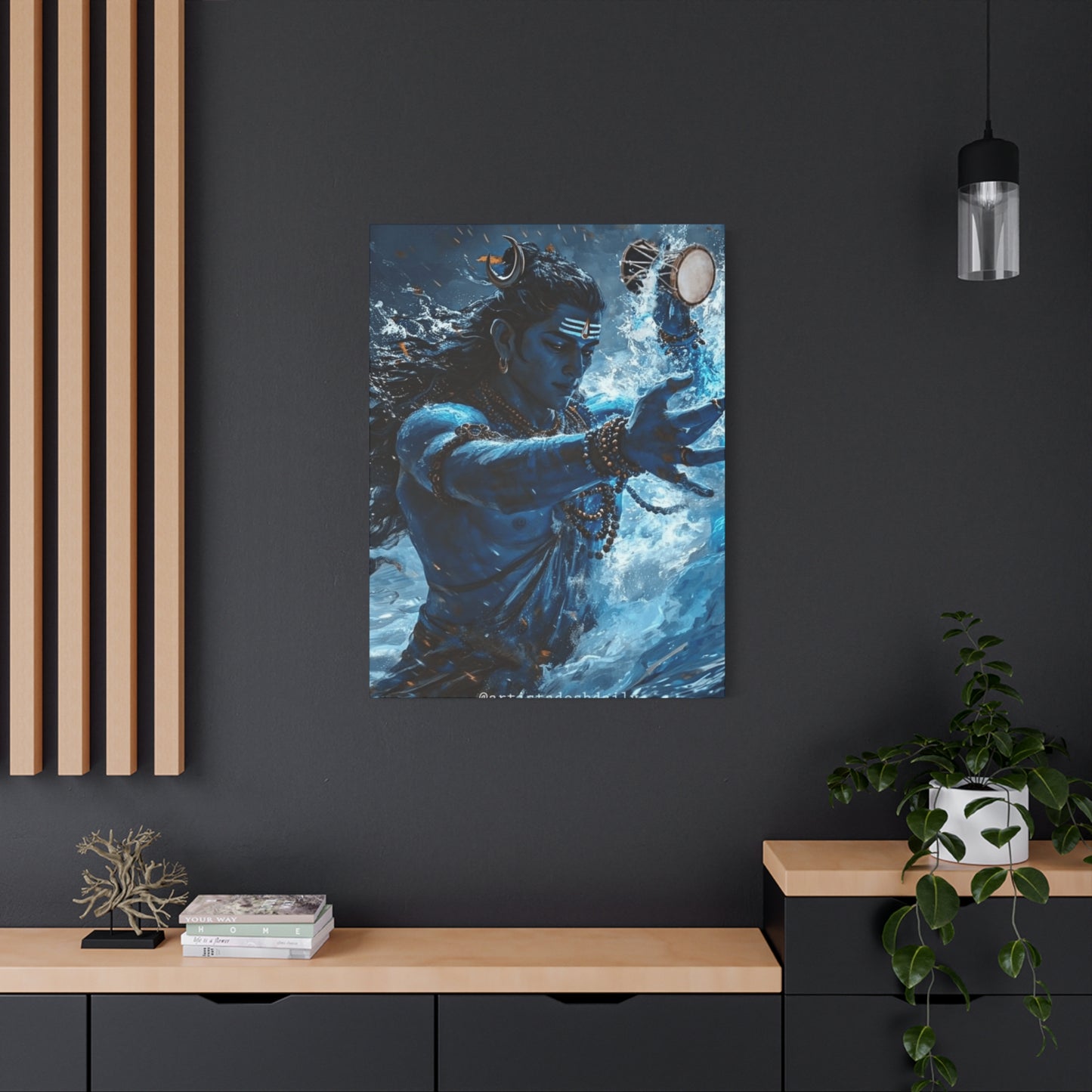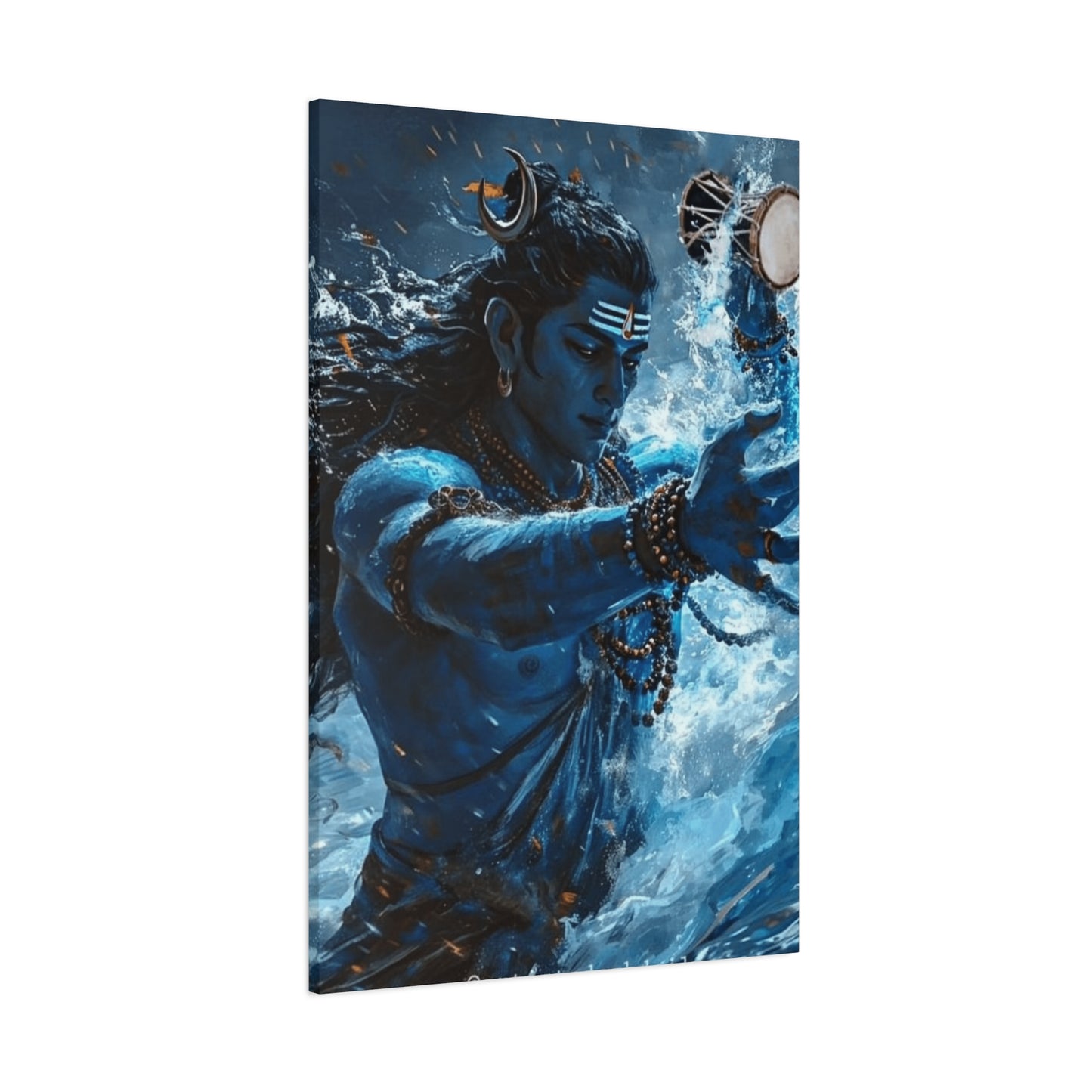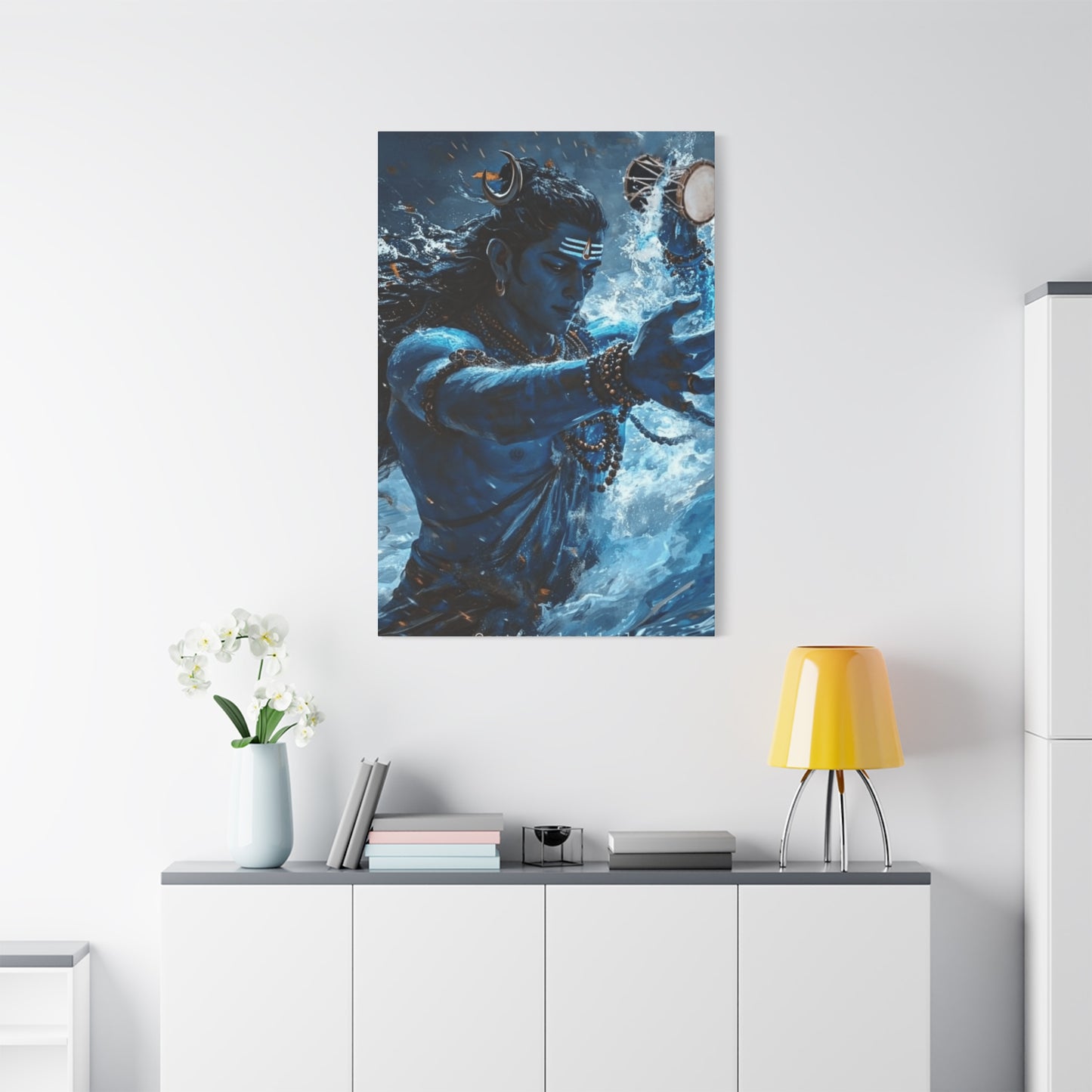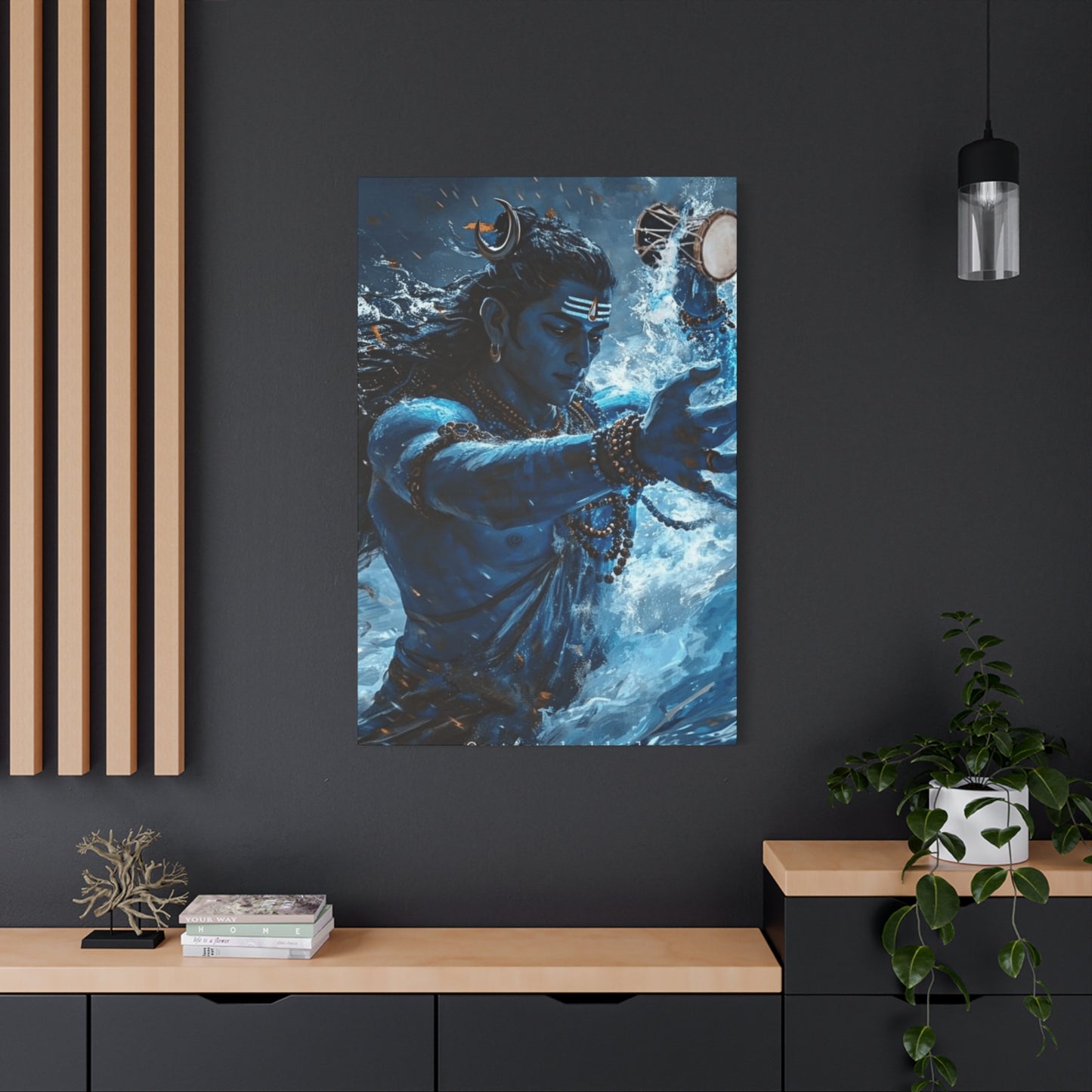Majestic Lord Shiva Wall Art: Sacred Expressions for Divine Living Spaces
The ancient deity Lord Shiva, revered as the destroyer and transformer in the Hindu trinity, has captivated artists, devotees, and art enthusiasts for millennia. His divine presence, depicted through intricate artistic expressions, brings profound spiritual energy into contemporary homes and sacred environments. Lord Shiva wall art represents more than mere decoration; it embodies centuries of devotional practice, philosophical depth, and artistic mastery that continues to inspire and transform living environments today.
The magnetism of Shiva-themed artistic creations lies not only in their aesthetic appeal but also in their ability to connect viewers with deeper spiritual truths. These sacred visual representations serve as windows into ancient wisdom, offering daily reminders of the cyclical nature of existence, the power of meditation, and the beauty of divine consciousness. Whether rendered in traditional styles that honor age-old artistic conventions or expressed through contemporary interpretations that speak to modern sensibilities, Lord Shiva wall art maintains its capacity to elevate any environment it graces.
From the dancing Nataraja pose that symbolizes the cosmic dance of creation and destruction to the serene meditative forms that embody perfect stillness, Shiva-inspired artwork encompasses a vast spectrum of emotional and spiritual expressions. Each piece tells a story, carries symbolic meaning, and contributes to creating environments that support contemplation, peace, and spiritual growth.
The Sacred Significance of Lord Shiva Wall Art
The profound spiritual importance of Lord Shiva wall art extends far beyond artistic appreciation, touching the very core of Hindu philosophy and universal spiritual principles. These sacred depictions serve as powerful focal points for meditation, prayer, and contemplation, creating energetic sanctuaries within homes, temples, and meditation centers. The presence of Shiva imagery is believed to invoke the deity's protective and transformative energies, blessing inhabitants with wisdom, strength, and spiritual clarity.
In Vedic traditions, visual representations of deities function as sacred geometries that channel divine consciousness into physical reality. Lord Shiva wall art operates on this principle, serving as a bridge between the material and spiritual realms. The intricate symbolism embedded within each artistic representation – from the third eye that represents supreme consciousness to the serpents that symbolize control over death and rebirth – creates layers of meaning that deepen with contemplation and study.
The transformative power attributed to Shiva's presence makes these artistic pieces particularly valuable for individuals seeking personal growth and spiritual development. Many practitioners report enhanced meditation experiences when surrounded by thoughtfully chosen Shiva imagery, finding that these visual anchors help quiet the mind and facilitate deeper states of consciousness. The deity's association with both destruction and creation resonates with those navigating life transitions, offering comfort and guidance during periods of change.
The protective aspects of Lord Shiva are equally significant in the context of wall art placement. Traditional beliefs suggest that these sacred images create energetic shields around living environments, warding off negative influences while attracting positive spiritual energies. This protective function makes Lord Shiva wall art particularly popular in entrance areas, meditation rooms, and bedrooms, where the need for spiritual safeguarding is often most keenly felt.
The educational value of these artistic representations cannot be overlooked, particularly for families seeking to preserve and share Hindu cultural heritage with younger generations. Each symbol, mudra, and attribute depicted in Lord Shiva wall art carries specific teachings about dharma, karma, and the path to enlightenment, making these pieces valuable tools for cultural transmission and spiritual education.
Diverse Artistic Approaches to Lord Shiva Paintings
The artistic landscape of Lord Shiva paintings encompasses an remarkable diversity of styles, techniques, and interpretations, each offering unique aesthetic and spiritual experiences. Traditional approaches rooted in classical Indian art forms continue to flourish alongside contemporary innovations that blend ancient symbolism with modern artistic sensibilities, creating a rich tapestry of creative expression that appeals to varied tastes and spiritual needs.
Classical painting traditions such as Pichwai, Tanjore, and Mysore styles have established enduring approaches to depicting Lord Shiva that emphasize rich colors, gold leaf embellishments, and intricate detailing. These traditional methodologies prioritize symbolic accuracy and spiritual authenticity, ensuring that each element within the composition serves both aesthetic and devotional purposes. The meticulous craftsmanship required for these classical approaches results in pieces that function as both art objects and sacred icons.
Contemporary artistic interpretations of Lord Shiva have expanded the visual vocabulary available to modern practitioners and art collectors. Abstract representations that capture the essence of Shiva's energy through color, form, and movement offer fresh perspectives on ancient themes, making these spiritual concepts accessible to contemporary audiences who might find traditional iconography less immediately appealing. These modern approaches often emphasize emotional resonance over literal representation, creating powerful visual experiences that transcend cultural boundaries.
Mixed media approaches have revolutionized Lord Shiva wall art creation, combining traditional painting techniques with collage, digital elements, and three-dimensional components. These hybrid methodologies enable artists to create richly textured pieces that engage multiple senses and offer varied viewing experiences depending on lighting conditions and viewing angles. The incorporation of metallic elements, crystals, and other reflective materials can enhance the spiritual ambiance of these pieces, creating dynamic visual experiences that change throughout the day.
Minimalist interpretations of Lord Shiva themes have gained popularity among contemporary practitioners seeking subtle yet meaningful spiritual imagery. These simplified approaches distill complex iconography to essential elements, creating clean, modern pieces that integrate seamlessly with contemporary home aesthetics while maintaining their spiritual significance. Such pieces often focus on single symbolic elements like the trident, the drum, or the third eye, allowing viewers to contemplate specific aspects of Shiva's nature in depth.
Regional artistic traditions have contributed unique flavors to Lord Shiva wall art, with Bengali, Rajasthani, Kerala, and other regional styles offering distinctive interpretations of common themes. These regional variations reflect local cultural influences, climate considerations, and artistic preferences, creating a rich diversity of options for collectors and practitioners seeking pieces that resonate with specific cultural backgrounds or aesthetic preferences.
Selecting Perfect Lord Shiva Wall Art for Your Environment
Choosing appropriate Lord Shiva wall art for residential environments requires careful consideration of multiple factors including aesthetic compatibility, spiritual intentions, room function, and personal resonance with specific artistic representations. The selection process extends beyond simple visual appeal to encompass deeper questions about the energy and atmosphere desired within particular living environments, making thoughtful consideration essential for optimal results.
Room function plays a crucial role in determining suitable Lord Shiva wall art selections, as different environments serve varying purposes and require corresponding energetic support. Meditation rooms benefit from serene, contemplative representations of Shiva in peaceful poses, often featuring closed eyes and meditative mudras that support introspective practices. These pieces should emphasize tranquility and spiritual depth rather than dynamic energy or dramatic visual elements that might distract from meditative focus.
Living areas accommodate more diverse artistic approaches, allowing for larger, more dramatic pieces that can serve as conversation starters while maintaining their spiritual significance. Dynamic representations of Nataraja or cosmic Shiva can create powerful focal points in these communal areas, while still contributing to the overall spiritual atmosphere of the home. The scale and visual impact of pieces chosen for living areas should complement existing decor while asserting their presence as meaningful spiritual elements.
Bedroom environments require particular sensitivity in Lord Shiva wall art selection, as these private sanctuaries need imagery that promotes rest, protection, and peaceful sleep. Gentle, protective aspects of Shiva work well in these intimate environments, avoiding overly stimulating or energetically intense representations that might interfere with restful sleep patterns. Soft color palettes and serene expressions contribute to creating bedroom environments that support both physical rest and spiritual rejuvenation.
Size considerations extend beyond simple proportional relationships to encompass energetic impact and visual balance within existing architectural elements. Oversized pieces can overwhelm smaller rooms while creating powerful focal points in larger areas, while smaller pieces might get lost in expansive wall areas but work perfectly in intimate settings or as part of larger gallery arrangements. The relationship between artwork scale and room proportions should support the overall energetic goals for each environment.
Color harmony represents another crucial consideration in selecting Lord Shiva wall art, as color choices significantly impact both aesthetic integration and energetic influence within living environments. Traditional color associations for Shiva imagery include blues, whites, and earth tones, but contemporary interpretations offer expanded color palettes that can better coordinate with existing decor schemes while maintaining spiritual authenticity and impact.
Personal resonance with specific artistic representations should ultimately guide selection decisions, as the most spiritually beneficial pieces are those that genuinely inspire and uplift individual viewers. This personal connection might manifest as immediate emotional response, prolonged visual interest, or deeper spiritual feelings when contemplating particular pieces, suggesting that these works will provide ongoing benefits within daily living environments.
Harmonizing Traditional and Contemporary Decor with Shiva Imagery
The successful integration of Lord Shiva art within diverse decorative schemes requires understanding how ancient spiritual imagery can complement both traditional and contemporary aesthetic approaches. This harmonization process involves balancing respect for the sacred nature of these representations with practical considerations about visual cohesion, color coordination, and stylistic compatibility within existing home environments.
Traditional decorative settings naturally accommodate classical Lord Shiva representations, as these environments already embrace cultural elements, rich textures, and symbolic imagery. Hindu households often feature dedicated puja rooms or shrine areas where traditional Shiva art can be displayed with appropriate ritual objects, flowers, and lighting to create comprehensive devotional environments. These traditional settings allow for more elaborate presentations that might include multiple pieces, traditional framing, and ceremonial elements.
Contemporary minimalist environments present unique opportunities for showcasing Lord Shiva wall art as statement pieces that provide cultural depth and spiritual significance within otherwise sparse aesthetic frameworks. Modern artistic interpretations of Shiva themes often work exceptionally well in these settings, offering clean lines, simplified symbolism, and color palettes that complement contemporary design principles while introducing meaningful spiritual elements.
The challenge of blending traditional spiritual imagery with modern decorative approaches often yields surprisingly harmonious results when approached thoughtfully. Contemporary furniture and fixtures can provide striking contrasts that actually enhance the visual impact of traditional Lord Shiva paintings, while modern lighting techniques can highlight the intricate details and rich colors of classical artistic representations in ways that enhance their beauty and spiritual presence.
Transitional decorative schemes that combine elements from multiple design periods offer particularly fertile ground for Lord Shiva wall art integration. These eclectic environments welcome diverse artistic influences, making it easier to incorporate pieces that might not fit neatly within strictly traditional or contemporary categorizations. The spiritual and cultural significance of Shiva imagery can actually help unify diverse decorative elements by providing common thematic threads.
Color bridge strategies can facilitate successful integration of Lord Shiva art within existing decorative schemes by identifying color elements within chosen artwork that echo or complement existing color palettes. This approach allows the spiritual significance of the imagery to take precedence while ensuring visual harmony within the overall decorative framework.
Scale and proportion considerations become particularly important when integrating Lord Shiva wall art within contemporary settings, where oversized traditional pieces might overwhelm minimalist aesthetics, while appropriately scaled pieces can create perfect focal points that draw attention without disrupting visual balance. The goal is creating environments where spiritual and aesthetic elements enhance rather than compete with each other.
Symbolic Elements and Their Deeper Meanings
The rich symbolic vocabulary embedded within Lord Shiva wall art provides layers of meaning that deepen with study and contemplation, making these artistic representations valuable tools for spiritual education and personal growth. Understanding these symbolic elements enhances both appreciation and spiritual benefits derived from living with these sacred images, transforming casual viewing into opportunities for meaningful reflection and learning.
The third eye, perhaps the most recognizable symbol associated with Lord Shiva, represents supreme consciousness, inner vision, and the ability to perceive beyond ordinary reality. In wall art representations, this symbol often appears as a vertical mark on Shiva's forehead, sometimes depicted as an actual eye or represented through geometric forms. The presence of this symbol in artistic compositions serves as a reminder to develop inner sight and spiritual discernment in daily life.
The trident carried by Lord Shiva symbolizes the three fundamental powers of creation, preservation, and destruction, as well as the three qualities of nature known as gunas. Artistic representations often emphasize the trident through prominent placement or decorative elaboration, making it a focal point for contemplating the cyclical nature of existence and the divine forces that govern cosmic processes.
Serpents adorning Shiva's neck and arms represent mastery over death, time, and the kundalini energy that lies dormant within every individual. These symbolic elements in wall art serve as reminders of the potential for spiritual awakening and the conquest of fear that characterizes advanced spiritual development. The artistic treatment of serpent symbolism varies widely, from realistic representations to highly stylized decorative elements.
The drum associated with Lord Shiva symbolizes the primordial sound from which creation emerges and the rhythmic nature of cosmic cycles. In artistic representations, this symbol often appears alongside dancing forms of Shiva, emphasizing the connection between sound, movement, and the creative forces of the universe. The presence of drum symbolism in wall art can inspire contemplation of the role of sound and vibration in spiritual practice.
The sacred river Ganga flowing from Shiva's hair represents purification, grace, and the descent of divine consciousness into material reality. Artistic interpretations of this symbol range from literal representations of flowing water to abstract suggestions of movement and flow. This symbolic element in Lord Shiva wall art reminds viewers of the purifying power of divine grace and the importance of spiritual cleansing.
The ash that covers Shiva's body symbolizes the impermanence of material existence and the ultimate reality that transcends physical form. In artistic representations, this aspect might be suggested through color choices, texture treatments, or specific iconographic elements that reference this important symbolic dimension of Shiva's nature.
Historical Narratives Behind Famous Shiva Artistic Representations
The artistic tradition surrounding Lord Shiva encompasses countless legendary narratives that have inspired generations of artists and continue to influence contemporary creative expressions. These stories provide context and deeper meaning for artistic representations, transforming static images into dynamic narratives that connect viewers with ancient wisdom traditions and timeless spiritual truths.
The cosmic dance of Nataraja represents one of the most famous and frequently depicted narratives in Lord Shiva wall art. This story describes Shiva's dance of creation and destruction, performed within a circle of flames that represents the cosmos. The artistic tradition surrounding this narrative has developed sophisticated iconographic conventions that encode multiple layers of meaning within single compositions, making Nataraja representations particularly rich sources for contemplation and study.
The marriage of Shiva and Parvati has inspired countless artistic interpretations that explore themes of divine union, the balance of masculine and feminine principles, and the integration of opposites. These narrative-based artworks often feature elaborate ceremonial settings, supporting characters from Hindu mythology, and symbolic elements that reference the cosmic significance of this divine union. Such pieces work particularly well in bedroom environments or areas dedicated to relationship harmony.
The story of Shiva drinking the poison that emerged during the churning of the ocean demonstrates his compassionate sacrifice for the welfare of all beings. Artistic representations of this narrative often emphasize the blue coloration of Shiva's throat and the protective aspects of his nature. These pieces serve as powerful reminders of selfless service and the importance of taking responsibility for collective welfare.
The Ganga descent narrative, describing how Shiva caught the sacred river in his hair to prevent its force from destroying the earth, has inspired artistic works that emphasize Shiva's role as protector and mediator between divine and earthly realms. These representations often feature flowing water imagery and highlight Shiva's hair as a central compositional element, creating pieces that evoke both power and grace.
The destruction of the three cities demonstrates Shiva's role as cosmic destroyer of evil and ignorance. Artistic interpretations of this narrative often feature dynamic compositions with multiple figures, dramatic lighting effects, and symbolic representations of the forces of good and evil. These powerful pieces work well in areas where strength and protection are desired.
The meditation narratives surrounding Shiva's long periods of cosmic contemplation have inspired some of the most serene and spiritually powerful artistic representations. These pieces often feature closed eyes, meditative postures, and minimal compositional elements that emphasize stillness and inner focus. Such artworks provide excellent focal points for meditation areas and support contemplative practices.
Creating Sacred Meditation Environments with Shiva Art
The incorporation of Lord Shiva wall art into meditation environments requires careful attention to energetic flow, visual harmony, and symbolic appropriateness to create optimal conditions for contemplative practice. These sacred artworks can significantly enhance the meditative atmosphere when chosen and positioned thoughtfully, serving as powerful anchors for concentration and inspiration during spiritual practice.
Positioning considerations for meditation room artwork should prioritize clear sightlines from primary meditation seating while avoiding placements that might create visual distractions during practice. The ideal location allows for comfortable viewing during preparatory moments while remaining softly present rather than demanding attention during deeper meditative states. Many practitioners find that placing Lord Shiva wall art at eye level when seated creates optimal visual relationships for meditation support.
Lighting design significantly impacts the effectiveness of Lord Shiva art in meditation environments, with soft, indirect illumination generally preferred over harsh or variable lighting conditions. Natural light from windows can create beautiful, changing interactions with artwork throughout the day, while carefully positioned accent lighting can highlight symbolic details and enhance the spiritual atmosphere during evening meditation sessions.
The selection of appropriate Lord Shiva representations for meditation environments should emphasize peaceful, contemplative aspects rather than dynamic or dramatic depictions that might prove distracting during practice. Meditative poses, closed-eye expressions, and symbolic elements associated with inner stillness work particularly well in these focused environments. Abstract or minimalist interpretations can also provide excellent focal points that support rather than compete with meditative concentration.
Color considerations become particularly important in meditation settings, where subtle, harmonious palettes generally prove more supportive than bold or contrasting color schemes. Earth tones, blues, and muted palettes often work well with Lord Shiva imagery while maintaining the calm atmosphere needed for successful meditation practice. The psychological impact of color on meditative states should guide selection decisions in these specialized environments.
Multiple artwork arrangements can create comprehensive sacred environments that support various aspects of meditation practice, from initial settling and focus development to deeper contemplative states. However, such arrangements require careful curation to avoid visual overwhelm or conflicting energetic messages that might interfere with the clarity needed for effective meditation practice.
Personal resonance with chosen Lord Shiva representations becomes particularly important in meditation contexts, where the artwork will be viewed regularly over extended periods. Pieces that genuinely inspire, calm, or uplift individual practitioners will provide ongoing support for meditation practice, while artwork that feels neutral or uninspiring may gradually become background elements that contribute little to the meditative experience.
Contemporary Artists Reimagining Lord Shiva Themes
The contemporary art world has witnessed a remarkable renaissance in Lord Shiva-themed creations, with artists from diverse cultural backgrounds and artistic traditions bringing fresh perspectives to ancient spiritual themes. These modern interpreters combine reverence for traditional iconography with innovative techniques, materials, and conceptual approaches that speak to contemporary sensibilities while maintaining the sacred essence of Shiva worship.
Digital art technologies have opened new frontiers for Lord Shiva representation, enabling artists to create luminous, dynamic pieces that incorporate movement, light effects, and interactive elements impossible to achieve through traditional media. These technological innovations allow for the creation of wall art that changes throughout the day, responds to viewer presence, or incorporates subtle animations that enhance the sense of divine presence and cosmic energy.
Mixed media approaches have become increasingly popular among contemporary artists working with Lord Shiva themes, combining traditional painting techniques with photography, collage elements, found objects, and three-dimensional components. These hybrid approaches often result in richly textured pieces that engage multiple senses and offer varied viewing experiences depending on lighting conditions and viewing distances.
Street art and urban art movements have embraced Lord Shiva imagery as a means of bringing sacred themes into public consciousness and challenging conventional boundaries between religious and secular art. These often large-scale works demonstrate the universal appeal and contemporary relevance of Shiva symbolism, while introducing these themes to audiences who might not otherwise encounter them.
International artists have brought cross-cultural perspectives to Lord Shiva wall art creation, blending Eastern spiritual themes with Western artistic traditions to create unique fusion pieces that bridge cultural divides. These works often emphasize universal aspects of Shiva's symbolism while incorporating artistic elements from multiple cultural traditions, creating truly global artistic expressions.
Environmental and sustainable art practices have influenced contemporary Lord Shiva creation, with artists increasingly conscious of material choices, production methods, and environmental impact of their works. These considerations have led to innovations in natural pigments, sustainable materials, and production processes that align with spiritual values of respect for nature and conscious living.
Abstract interpretations of Lord Shiva themes have gained popularity among artists seeking to capture the essence of divine energy without relying on traditional iconographic conventions. These pieces often emphasize color, form, movement, and energetic qualities over literal representation, creating powerful emotional and spiritual experiences that transcend cultural boundaries while maintaining their connection to Shiva consciousness.
Artistic Materials and Techniques in Shiva Wall Art Creation
The creation of Lord Shiva wall art encompasses a vast range of materials and techniques, from ancient methods passed down through generations of traditional artists to cutting-edge contemporary approaches that push the boundaries of artistic expression. Understanding these various methodologies enhances appreciation for the craftsmanship involved in creating these sacred works while informing selection decisions for collectors and practitioners.
Traditional painting materials such as natural pigments derived from minerals, plants, and other organic sources continue to play important roles in Lord Shiva wall art creation, particularly among artists maintaining classical techniques and cultural authenticity. These materials often produce unique color qualities and longevity characteristics that synthetic alternatives cannot match, while their use connects contemporary works with centuries of artistic tradition.
Canvas and support materials vary widely depending on artistic approach and intended use, with options ranging from traditional cloth and wood supports to modern synthetic materials that offer enhanced durability and archival qualities. The choice of support material significantly impacts both the visual qualities and longevity of finished pieces, making this an important consideration for both artists and collectors.
Gold leaf and metallic elements remain popular in Lord Shiva wall art creation, particularly in works that draw inspiration from traditional temple art and classical Indian painting traditions. These precious materials not only enhance visual appeal but also carry symbolic significance related to divine radiance and spiritual illumination, making them particularly appropriate for sacred artistic expressions.
Printmaking techniques including lithography, screen printing, and digital printing have democratized access to high-quality Lord Shiva wall art by enabling the production of affordable reproductions that maintain artistic integrity while making these spiritual images accessible to broader audiences. Contemporary printmaking approaches often combine traditional techniques with digital enhancement to create unique hybrid works.
Three-dimensional elements and relief work have become increasingly popular in contemporary Lord Shiva wall art, adding tactile dimensions that enhance viewer engagement and create dynamic shadow effects that change throughout the day. These dimensional approaches often incorporate carved elements, applied textures, and layered compositions that create depth and visual interest.
Protective finishes and archival treatments ensure the longevity of Lord Shiva wall art, particularly important given the spiritual and cultural significance of these pieces within home environments. Modern conservation techniques can significantly extend the life of both traditional and contemporary works while maintaining their visual impact and spiritual presence over time.
Inspirational Power of Lord Shiva Art for Inner Peace and Strength
The transformative influence of Lord Shiva wall art on personal consciousness and emotional well-being represents one of the most compelling reasons for incorporating these sacred images into living environments. Beyond their aesthetic appeal, these spiritual representations function as visual anchors that support inner peace, provide strength during challenging periods, and inspire ongoing spiritual development through daily contemplation and connection.
The meditative qualities inherent in thoughtfully chosen Lord Shiva imagery can significantly impact stress levels and overall mental well-being. Many practitioners report that regular viewing of these sacred representations helps calm anxious thoughts, provides perspective during difficult situations, and supports the development of inner equanimity. The symbolic elements within these artworks serve as reminders of deeper truths that can shift perspective away from temporary problems toward eternal principles.
Strength and courage represent important themes within Lord Shiva iconography, with various depictions emphasizing different aspects of divine power that can inspire personal empowerment. The destroyer aspect of Shiva reminds viewers of the importance of eliminating negative patterns, while the protective elements provide comfort and security during uncertain times. These symbolic associations can provide psychological support that translates into greater confidence and resilience in daily life.
The philosophical teachings embedded within Lord Shiva wall art offer ongoing opportunities for contemplation and personal growth. Each viewing can reveal new insights or deepen understanding of previously recognized truths, making these pieces valuable companions for spiritual development over time. The layered symbolism ensures that these works continue to offer fresh perspectives and inspiration as individual understanding evolves.
Emotional regulation benefits associated with Lord Shiva imagery often surprise newcomers to these spiritual practices. The peaceful aspects of Shiva consciousness, particularly evident in meditative representations, can help establish emotional balance and provide refuge from the intensity of modern life. The cyclical themes present in Shiva symbolism remind viewers that all conditions are temporary, supporting emotional resilience during challenging periods.
Personal transformation stories frequently mention Lord Shiva wall art as catalysts for positive change, with individuals reporting shifts in perspective, increased spiritual awareness, and enhanced capacity for compassion following prolonged exposure to these sacred images. While individual experiences vary, the consistency of such reports suggests genuine transformative potential inherent in these spiritual representations.
Community and cultural connection represents another dimension of inspiration provided by Lord Shiva wall art, particularly for individuals maintaining cultural traditions within diverse environments. These visual connections to ancestral wisdom and cultural heritage can provide strength, identity, and continuity that support psychological well-being and cultural preservation across generations.
Integrating Shiva Art Within Yoga Practice Environments
The synergy between Lord Shiva wall art and yoga practice environments creates powerful opportunities for enhancing both physical and spiritual aspects of yogic discipline. As the divine originator of yoga according to Hindu tradition, Shiva's presence through artistic representation can significantly deepen the spiritual dimension of practice while providing inspiration and focus for dedicated practitioners.
Sacred geometry principles inherent in traditional Lord Shiva representations align naturally with yogic concepts of energy flow, chakra activation, and spiritual alignment. The symbolic elements within these artworks often correspond to specific aspects of yogic philosophy, creating visual reinforcement for the subtle energetic work that forms the foundation of advanced yoga practice. Practitioners often find that appropriate Shiva imagery helps maintain awareness of these deeper dimensions during physical practice.
Pranayama and breathing practices can be enhanced through visual connection with Lord Shiva representations that emphasize breath control, meditation, and inner stillness. The rhythmic aspects of Shiva's cosmic dance correlate with breathing patterns, while meditative depictions provide focal points for concentration during breath work. Many yoga instructors incorporate specific Shiva imagery to support particular breathing techniques or meditation practices.
Asana practice benefits from the presence of Lord Shiva wall art through multiple mechanisms, including enhanced focus, spiritual inspiration, and connection with the traditional roots of yogic practice. Dynamic representations of Shiva can inspire strength and flexibility during challenging poses, while peaceful depictions provide calming influences during restorative practices. The psychological impact of practicing in the presence of sacred imagery often results in deeper, more meaningful practice sessions.
Teacher training environments frequently incorporate Lord Shiva wall art as educational tools for conveying yogic philosophy, symbolism, and spiritual principles to developing instructors. These visual references provide concrete anchors for abstract concepts, making complex philosophical ideas more accessible and memorable. The presence of traditional imagery also helps maintain cultural authenticity within contemporary yoga education programs.
Group practice dynamics can be positively influenced by thoughtfully chosen Lord Shiva representations that create shared focal points for collective intention and spiritual connection. These images often serve as rally points for group energy while providing individual practitioners with personal inspiration and meaning. The unifying effect of shared sacred imagery can enhance the community aspects of group practice.
Meditation and shavasana periods benefit particularly from the presence of Lord Shiva wall art that emphasizes stillness, peace, and inner awareness. These final integration periods of yoga practice provide opportunities for deeper connection with the spiritual themes represented in the artwork, allowing practitioners to carry these influences beyond formal practice into daily life.
Comparing Mural and Framed Approaches to Shiva Art Display
The choice between mural and framed presentation approaches for Lord Shiva wall art significantly impacts both aesthetic integration and spiritual effectiveness within living environments. Each approach offers distinct advantages and considerations that should be evaluated based on practical requirements, aesthetic preferences, and spiritual intentions for specific applications.
Mural approaches create immersive environments that fully integrate Lord Shiva imagery with architectural elements, resulting in seamless spiritual atmospheres that transform entire rooms into sacred environments. These large-scale installations often provide more powerful energetic impacts due to their scale and integration, while eliminating the visual boundaries created by frames that can psychologically separate artwork from living environments.
The permanence associated with mural installations requires careful consideration of long-term commitment and potential changes in living situations. Unlike framed pieces that can be relocated or reconfigured, murals represent significant investments in specific locations that may not be transferable. This permanence can be advantageous for individuals committed to maintaining dedicated spiritual environments, while potentially problematic for those anticipating future moves or changing aesthetic preferences.
Customization possibilities with mural approaches often exceed those available through framed artwork, allowing for precise integration with architectural features, existing color schemes, and specific spatial requirements. Artists working on mural projects can incorporate room-specific elements, adjust compositions to accommodate architectural details, and create unique pieces that perfectly suit individual environments and spiritual needs.
Framed presentations offer flexibility advantages that make them appealing for many applications, including the ability to relocate pieces, reconfigure arrangements, and update displays as aesthetic preferences or spiritual focus evolve. This flexibility proves particularly valuable for individuals exploring different aspects of Lord Shiva symbolism or those whose living situations may change over time.
Conservation and maintenance considerations differ significantly between mural and framed approaches, with framed pieces generally offering better protection from environmental factors while murals may be more vulnerable to damage from moisture, temperature changes, or accidental contact. However, murals often prove more durable over extremely long periods due to their integration with structural elements and reduced handling requirements.
Cost considerations vary widely depending on size, complexity, and artistic requirements, with both approaches capable of accommodating diverse budget ranges. Mural projects often involve higher initial investments but may provide better long-term value for permanent installations, while framed pieces offer more accessible entry points with opportunities for gradual collection building over time.
Lighting integration opportunities differ between these approaches, with murals offering possibilities for architectural lighting integration that can dramatically enhance visual impact and spiritual atmosphere, while framed pieces may be more easily repositioned to take advantage of changing lighting conditions or updated illumination schemes.
The Spiritual Psychology of Color in Shiva Paintings
Color psychology plays a fundamental role in the spiritual effectiveness and emotional impact of Lord Shiva wall art, with traditional color associations carrying deep symbolic meanings that influence viewer consciousness and spiritual receptivity. Understanding these color relationships enhances both selection processes and appreciation for the subtle ways that artistic choices support spiritual development and personal transformation.
Blue, the color most strongly associated with Lord Shiva, represents infinite consciousness, divine transcendence, and the vast expanse of cosmic awareness. In Lord Shiva wall art, various shades of blue create different energetic effects, from the deep midnight blues that suggest profound mystery and cosmic depths to lighter sky blues that evoke expansive awareness and peaceful transcendence. The psychological impact of blue in Shiva representations tends to promote calm, introspection, and connection with higher consciousness.
White symbolism in Lord Shiva imagery relates to purity, wisdom, and the ash that covers his body as a reminder of life's impermanence. White elements in Lord Shiva wall art often provide visual relief and spiritual balance, creating spaces of peace and clarity within more complex compositions. The psychological effects of white in these contexts support mental clarity, spiritual purification, and connection with essential truth beyond surface appearances.
Red and orange elements in Lord Shiva paintings typically relate to the fire of transformation, the energy of destruction and renewal, and the passionate intensity of divine consciousness engaged in cosmic processes. These warming colors can energize viewers and support practices related to personal transformation, while their spiritual associations remind observers of the dynamic, active aspects of divine consciousness.
Earth tones including browns, ochres, and natural pigments connect Lord Shiva imagery with grounding influences, stability, and connection with the natural world. These colors often appear in depictions that emphasize Shiva's role as lord of nature and his connection with the elements, providing psychological grounding that balances the more transcendent aspects of his nature.
Gold and metallic elements represent divine radiance, spiritual illumination, and the precious nature of spiritual wisdom. In Lord Shiva wall art, these elements often highlight important symbolic features while creating focal points that draw attention to significant spiritual teachings. The psychological impact of metallic elements tends to inspire reverence, appreciation for beauty, and recognition of the sacred within ordinary experience.
Color harmony principles in Lord Shiva wall art creation require balancing traditional symbolic associations with contemporary aesthetic considerations and personal preferences. Successful pieces often employ limited color palettes that emphasize specific spiritual themes while maintaining visual coherence and emotional impact. The interaction between colors within compositions can either support or undermine the spiritual effectiveness of these sacred representations.
Personalizing Lord Shiva Wall Art for Individual Spiritual Needs
The customization of Lord Shiva wall art for individual spiritual requirements involves understanding personal spiritual goals, aesthetic preferences, and energetic needs to create artistic environments that provide optimal support for individual spiritual development. This personalization process transforms generic spiritual imagery into powerful tools for personal transformation and daily spiritual practice.
Spiritual intention identification represents the foundational step in personalizing Lord Shiva wall art selections, requiring honest assessment of individual spiritual goals, challenges, and areas of desired growth. Whether seeking enhanced meditation focus, protection from negative influences, support during life transitions, or general spiritual inspiration, different aspects of Shiva consciousness offer specific benefits that can be emphasized through appropriate artistic choices.
Devotional relationship development with specific aspects of Lord Shiva often influences personalization decisions, as individuals naturally gravitate toward particular expressions of divine consciousness that resonate with their spiritual temperament and current life circumstances. Some practitioners feel drawn to the peaceful, meditative aspects of Shiva, while others connect more strongly with the dynamic, transformative expressions of divine energy.
Chakra correspondence considerations can inform the selection of Lord Shiva wall art that supports specific energetic work and spiritual development. Different symbolic elements within Shiva iconography correspond to various chakras and energy centers, allowing practitioners to choose pieces that support particular areas of energetic focus or healing. This approach requires some familiarity with both chakra system principles and traditional Shiva symbolism.
Cultural background integration allows individuals from diverse heritage backgrounds to find Lord Shiva representations that honor their specific cultural traditions while meeting contemporary spiritual needs. This might involve selecting pieces that reflect particular regional artistic styles, incorporating family or cultural symbols, or choosing pieces that bridge multiple spiritual traditions in meaningful ways.
Meditation practice support through personalized Lord Shiva wall art involves selecting pieces that enhance specific contemplative techniques or spiritual practices. Practitioners of mantra meditation might prefer pieces that incorporate sacred sounds or symbols, while those focused on breath work might choose representations that emphasize stillness and inner awareness. The visual elements should support rather than distract from chosen spiritual practices.
Living situation adaptation requires considering practical factors such as space limitations, family considerations, and potential relocations when personalizing Lord Shiva wall art selections. Pieces chosen for small apartments differ from those appropriate for dedicated meditation rooms, while families with young children might prioritize different aspects than individual practitioners living alone.
Temple Architecture Influence on Contemporary Shiva Art
The magnificent temple architecture of India has profoundly influenced contemporary Lord Shiva wall art creation, with ancient design principles, proportional systems, and decorative elements continuing to inspire modern artists working within this sacred tradition. These architectural influences provide both aesthetic guidance and spiritual authenticity that connect contemporary works with centuries of devotional art creation.
Sacred geometry principles derived from temple architecture frequently appear in contemporary Lord Shiva wall art, with artists incorporating mathematical relationships, proportional systems, and geometric frameworks that reflect ancient understanding of cosmic order and divine harmony. These geometric foundations often remain subtle within finished pieces while providing underlying structure that enhances both visual appeal and spiritual effectiveness.
Sculptural relief techniques developed for temple decoration have found new expression in contemporary Lord Shiva wall art creation, with artists adapting three-dimensional approaches to create pieces that incorporate depth, shadow, and tactile elements reminiscent of temple carvings. These dimensional approaches often prove particularly effective in creating dramatic focal points within contemporary living environments.
Conclusion:
Majestic Lord Shiva wall art offers a profound way to infuse your living spaces with spiritual energy, divine symbolism, and artistic beauty. As one of the most revered deities in Hinduism, Lord Shiva embodies transformation, inner strength, and cosmic balance—qualities that resonate deeply and inspire a sacred ambiance in any home. Displaying Shiva-inspired art not only honors ancient traditions but also brings an aura of peace, mindfulness, and transcendence into your everyday environment.
The power of Lord Shiva wall art lies in its ability to convey complex spiritual narratives through compelling imagery. From serene meditative poses to dynamic depictions of Shiva as the cosmic dancer (Nataraja), each artwork reflects different aspects of his divine persona. The symbolism woven into these pieces—such as the third eye representing higher consciousness, the trident signifying power, or the crescent moon embodying renewal—invites contemplation and reverence, elevating your space beyond mere decoration.
Incorporating majestic Lord Shiva wall art creates a focal point that anchors your home’s spiritual and aesthetic tone. These pieces harmonize beautifully with both traditional and modern décor, offering versatility in placement—from prayer rooms and meditation corners to living areas and bedrooms. The rich colors, intricate details, and evocative expressions invite you to connect with your inner self, fostering calm and inspiration.
Beyond its decorative appeal, Shiva wall art serves as a daily reminder of resilience, transformation, and the pursuit of spiritual growth. It encourages mindfulness and a balanced approach to life’s challenges, echoing the deity’s own symbolism of destruction and regeneration. For practitioners of yoga, meditation, or those on a spiritual journey, this art deepens the connection to sacred practices and personal growth.
In conclusion, majestic Lord Shiva wall art transcends simple decoration—it transforms your living space into a sanctuary of divine expression and spiritual wisdom. By embracing the sacred imagery of Shiva, you invite grace, strength, and tranquility into your home, cultivating an environment that nourishes both the soul and the senses.

















